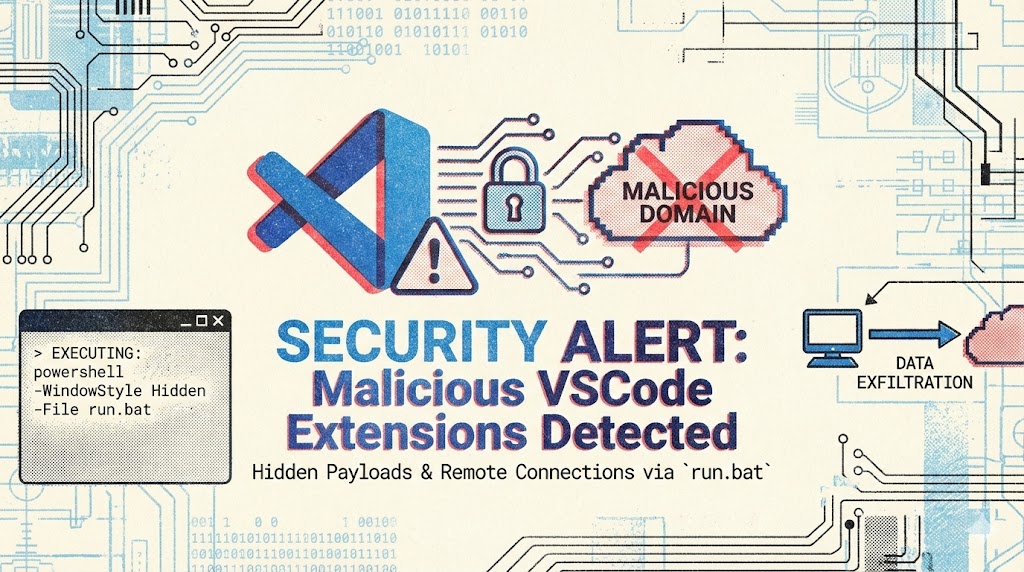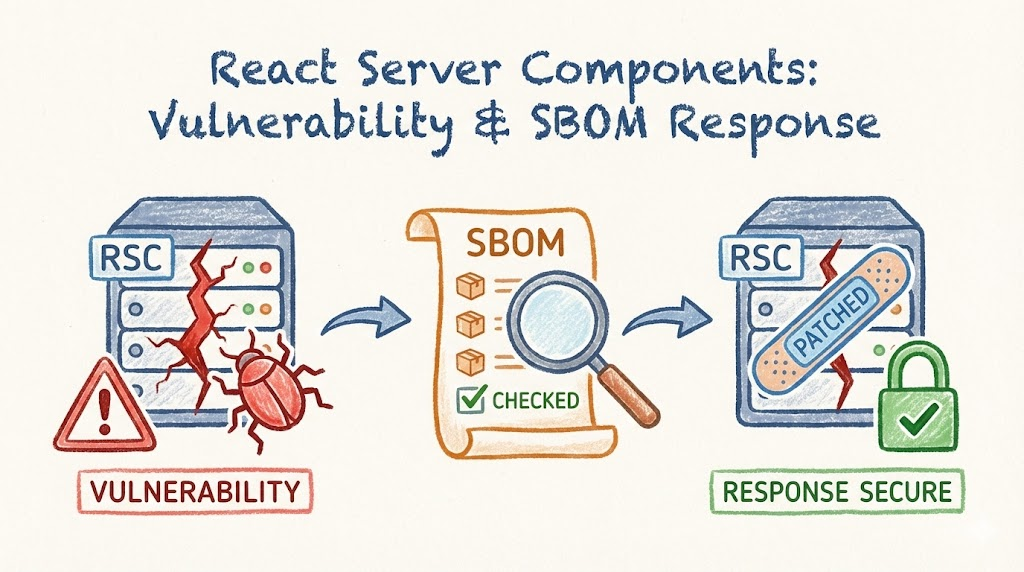Software Bill of Materials: Foundation for Trust in Software Supply Chain
 Arunanshu Biswas
Arunanshu BiswasTable of Contents
Modern software rarely ships as a single, hand-crafted binary. Instead, it is assembled from hundreds, sometimes thousands of third-party components that evolve on their own schedule. Knowing exactly what went into an application is now a basic security expectation, and the Software Bill of Materials (SBOM) is how that knowledge is expressed, stored and shared.
What Is an SBOM?
The U.S. Cybersecurity & Infrastructure Security Agency defines an SBOM as a formal record containing the details and supply-chain relationships of software components. In practice, an SBOM is a machine-readable document that lists each package, its version, license, cryptographic hash, and how it relates to other packages. It can optionally contain additional information such as the supplier, publisher, vulnerability information, etc.
SBOMs can be generated from source code, build systems, container images, or running workloads. They are most useful when produced automatically in CI pipelines so that every released artifact has a matching manifest.
Why SBOMs Are Moving From Nice-to-Have to Non-Negotiable
Regulatory and Market Drivers
| Driver | Requirement |
|---|---|
| Executive Order 14028 (United States) | Federal agencies must obtain SBOMs for all commercial software they procure. |
| CISA “Minimum Elements” | Prescribes baseline fields such as supplier, component name, version, dependency graph, etc. that every SBOM must include. |
| FDA Cybersecurity Guidance (2023) | Premarket submissions for network-connected medical devices now require an SBOM describing all software contained in the device. |
| EU Cyber Resilience Act (expected 2025) | Manufacturers of “products with digital elements” must supply customers and authorities with an SBOM upon request.[^eu-cyber-resil] |
Enterprise procurement teams have followed the same trajectory. Vendor questionnaires now treat “Can you provide an SBOM?” as a gate-keeper question for critical software and SaaS purchases.
SBOM Standards
SPDX
The Software Package Data Exchange (SPDX) project that are hosted by the Linux Foundation became ISO/IEC 5962:2021 in 2021. It models detailed provenance, license, and security metadata and can capture complex relationships such as snippets and patches. SPDX documents are typically authored in Tag-Value, RDF, or JSON formats.
CycloneDX
CycloneDX began as an OWASP initiative focused on application-security automation. The current specification (ECMA-424) is concise, JSON-first, and ships with optional extensions for hardware, machine-learning models, cryptography, and vulnerability (VEX) statements. CycloneDX is supported by more than 200 tools across 20+ programming languages and is commonly chosen when fast, security and compliance centric adoption is the goal.
Conversion is straightforward. Tools such as syft, protobom and Amazon Inspector export both CycloneDX and SPDX formats, letting teams satisfy legal and security stakeholders simultaneously.
Practical Use-Cases
- Vulnerability Management - Map affected components the moment a new CVE is published.
- Incident Response - Identify exploit paths by traversing dependency graphs in the SBOM.
- License Compliance - Verify that GPL or AGPL code is not inadvertently shipped in proprietary products.
- Third-Party Vendor Risk - Score suppliers on SBOM completeness and update cadence.
- M&A and Procurement Due Diligence - Expose hidden technical debt before contracts are signed.
- Continuous Compliance - Generate machine-verifiable evidence for SOC 2 or ISO 27001 audits.
- DevSecOps Policy Enforcement - Block builds that introduce disallowed licenses or vulnerable versions.
- Runtime Hardening - Remove unused libraries surfaced by the SBOM to shrink container attack surface.
- Customer Assurance - Share a filtered SBOM so enterprise customers can self-attest risk.
Real World Example: Log4Shell Vulnerability Response
When the Log4Shell remote code execution vulnerability (CVE-2021-44228) surfaced in December 2021, organizations scrambled to discover where the vulnerable log4j-core library was in use. Teams with searchable SBOM repositories identified affected services in minutes and issued targeted patches. Those without SBOMs spent days manually grepping codebases, containers, and artifact stores.
The episode demonstrated three tangible benefits for using SBOMs:
- Time-to-detect dropped from days to minutes.
- Blast-radius mapping became a query problem, not a forensic expedition.
- Executive reporting was immediate security leaders exported the relevant SBOM slice as evidence of remediation.
Getting Started
- Choose a baseline format. CycloneDX is a common format adopted by security teams
- Automate generation. Integrate tools such as SafeDep Vet
cyclonedx-bom,syft, orcdxgeninto your CI pipeline so every build produces and stores an SBOM artifact. - Centralize storage and search. Store SBOMs in a versioned registry or database. Add an API so that vulnerability scanners and policy engines can query SBOMs in real time. One such tool is DependencyTrack.
Conclusion
SBOMs have evolved from a compliance checkbox to a fundamental security capability. As regulatory requirements are enforced and supply chain attacks become more sophisticated, organizations that proactively adopt SBOM practices will respond faster to vulnerabilities, satisfy procurement requirements and build trust with customers. The question is no longer whether to implement SBOMs, but how quickly you can integrate them into your development workflow. Start small, automate early, and let the Log4Shell lesson guide your urgency—because the next critical vulnerability is not a matter of if, but when.
- sbom
- spdx
- cyclonedx
- cisa
- vet
Author
Arunanshu Biswas
safedep.io
Share
The Latest from SafeDep blogs
Follow for the latest updates and insights on open source security & engineering

DarkGPT: Malicious Visual Studio Code Extension Targeting Developers
Malicious extensions are lurking in the Visual Studio Code marketplace. In this case, we discover and analyze DarkGPT, a Visual Studio Code extension that exploits DLL hijacking to load malicious...

Shai-Hulud 2.0 npm Supply Chain Attack Technical Analysis
Critical npm supply chain attack compromises zapier-sdk, @asyncapi, posthog, and @postman packages with self-replicating malware. Technical analysis reveals credential harvesting, GitHub Actions...

Unpacking CVE-2025-55182: React Server Components RCE Exploit Deep Dive and SBOM-Driven Identification
A critical pre-authenticated remote code execution vulnerability (CVE-2025-55182) was disclosed in React Server Components, affecting Next.js applications using the App Router. Learn about the...

An Opinionated Approach for Frontend Testing for Startups
How we test our Frontend applications powered by React Query and server components with Vitest.

Ship Code
Not Malware
Install the SafeDep GitHub App to keep malicious packages out of your repos.
